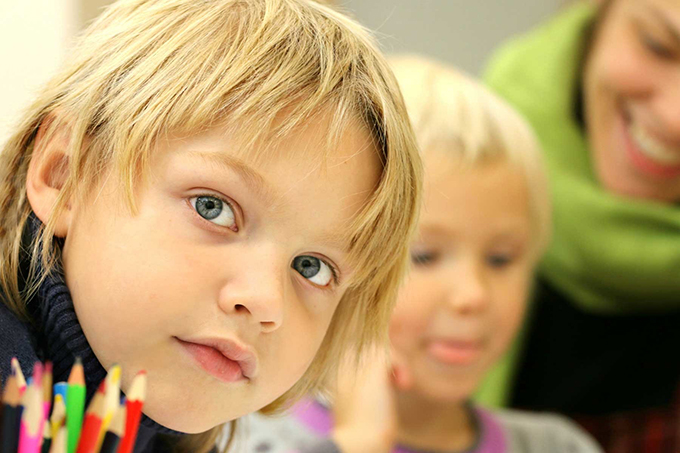
Teachers, like many of us, remember moments of achievement, schoolyard games and making mistakes as children. Often teachers draw on childhood memories to explain why they wanted to enter their profession. Teachers may hold memories of being inspired by a former teacher or resolve to do better than a teacher they experienced as unfair or belittling.
Childhood memories chronicle more than old scenes of school. Memory is a creative process that teachers can use to interpret the past and imagine the future of their work. Even more, how teachers remember childhood informs their commitments to challenge inequities in education, including systemic racism, classism and ableism.
We are four researchers located at universities in Canada and the United States: in a suburb of the Greater Toronto Area, Ottawa, an anglophone area of Montréal and Manhattan, New York. Our research examines how childhood memories shape the ways prospective teachers and people seeking to work with children understand their roles as future educators.
Our research has found that how new teachers and practitioners recall their childhoods carries important clues about how likely they are to name and challenge inequities in schools today.
The teacher’s childhood
Three decades ago, psychoanalyst and education researcher Deborah Britzman wrote her classic book, Practice Makes Practice. It examined how teachers’ memories of having once gone to school affected their present teaching. Britzman found that new teachers tend to recall stereotyped images of “good” and “bad” teachers, and in so doing, overlook how teachers themselves perceive teaching as a complex emotional experience.
Education researcher Saul Karnovsky argues that, still today, “there exists an invisible rule book that defines what teachers can and cannot do with their emotions.” The teachers of this study believed they should ignore or mask their emotions or vulnerability to appear in charge.
In fact, teaching opens a floodgate of feelings that are conventionally associated with childhood: worries about failure, wishes for certainty, fears of not knowing and the pain of rejection.
However, childhood memory is bigger than any one person’s emotions. As sociologist Sara Lawrence-Lightfoot suggests, teachers bring with them memories shaped by race, gender, class, ability and other factors that affect identity and deeply held assumptions.
This means that childhood memories of triumph or failure, protection or punishment are not isolated events; they are linked to complex cultural histories shaped by racism and hierarchical values. These legacies continue to privilege the material resources and presumed “innocence” of white middle-class children.
Teachers grow up occupying different positions in relation to these legacies, which can create a disconnect between their intentions and practices. Research by education scholars Jeannie Kerr and Vanessa Andreotti found that despite teacher candidates’ stated “desire to address multiple inequities” in schooling and society, they also applied a “deficit perspective” to the experiences of marginalized students, leaving unchallenged the structures that produce inequities and “their own privileged position within these structures.”
Learning to teach and work with children is not just about acquiring skills, but about developing an identity. This involves noticing how one’s own history can inform but sometimes obstruct one’s understanding of the unique experiences of children in the classroom.
Childhood memory and critique
We asked university students enrolled in teacher education and childhood studies programs to write down a salient childhood memory. We then asked them to make links between their memory and their motivations to work with children, and how they defined their commitments as teachers.
The majority of participants recalled times when they felt innocent and protected, which were then connected to a wish to protect children from struggle or discomfort in their future classrooms. Others described times when they made mistakes or broke the rules and suggested how being a nuisance is the right of all children. Still others remembered the heroic efforts of former teachers and used these memories to describe their plans to replicate similar strategies in their own practices.
However, beginning teachers and practitioners who remembered protected childhoods, playful antics and inspiring role models tended to assume that all children experience the same level of protection and innocence: that such memories were universal.
They did not consider how innocence has historically protected the interests of mainly white children, nor how the notion of innocence and middle class, able-bodied “worthiness” has been used to unjustly exclude and punish children who do not fit inside normative expectations of learning and development.
By contrast, people who remembered being bullied, left out, ignored or reprimanded connected these experiences with an analysis of systematic inequities. They reflected on how school structures disadvantage racially minoritized, differently-abled and working class children.
Beyond recollecting innocent kids and heroic teachers, such memories critiqued schools as inequitable institutions that harm some children and that are themselves in need of transformation.
Why memory matters
Memory can offer a critical vantage point from which to examine how recollections of seemingly individual feelings — such as the joy of acing a test or the frustration of being misunderstood — may also reflect dominant cultural beliefs about normative childhoods.
Teacher education and childhood studies programs can support beginning teachers and practitioners develop critical perspectives of schooling and society by helping them to analyze how structures of privilege and oppression have shaped their own experiences of childhood. When educators can analyze the social structures that have privileged or disadvantaged them as children, they may be better positioned to notice and challenge the inequities faced by the children in their charges.
While it is impossible to undo the past, connecting childhood memories to social contexts of inequity can help teachers put history to new uses and change the future of education.
Author Bios: Lisa Farley is Associate Professor, Education at York University, Canada, Debbie Sonu is Associate Professor, Curriculum and Teaching at Hunter College, Julie C. Garlen is Associate Professor, Childhood and Youth Studies at Carleton University and Sandra Chang-Kredl is Associate Professor in Education at Concordia University
